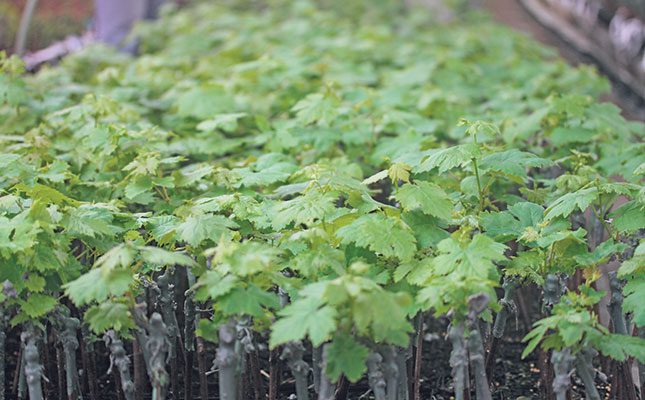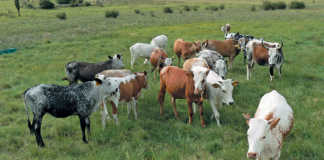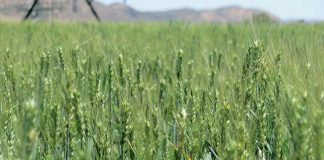
Photo: Vititec
Mistakes made when planting new vineyards are generally too expensive to fix later and may result in vines never performing as well and requiring replacement earlier than vineyards treated correctly from the start.
Various factors influence the potential of a vineyard at the planting stage, ranging from vineyard design to planting choice and market demand.
At the Vine Workers’ Development Course, held in May at Eenzaamheid near Paarl in the Western Cape, Reinier Louw, Vititec’s client liaison manager, highlighted the importance of using certified plant material and managing the vines correctly before and during planting.
Disease-free
Why certified plant material? Louw explained that this was a safeguard, ensuring that plant material was as close to virus-free as possible, true-to-type, and complied with industry standards.
Another advantage was that farmers who used certified plant material could count on assistance from the supplier if something was wrong with the plant material, whereas they planted at their own risk when using uncertified plant material.
To ensure plant material is certified, Vititec foundation blocks, which are used to propagate the plant material for the mother blocks, are established in insect-free facilities and open-field isolated areas – far from any other vineyards that might be carrying diseases.
Mother blocks, established from plant material from the foundation blocks, are established in virgin soil on the farms of contracted collaborator producers, in preselected isolated areas.
The nucleus, foundation and mother-block sources are continuously inspected for abnormalities, such as plant deviations, pests and diseases, and regularly tested to ensure the materials are free from the most prominent vine diseases, namely fanleaf, fleck, corky bark, stem-pitting, leafroll and Shiraz disease.
To be certified, plant material also has to be visually free from bacterial diseases, such as crown gall and bacterial blight, fungal diseases such as Pythium spp and Phytophthora spp, and insect pests.
In addition, the vines have to comply with certain minimum requirements in terms of the length of the material and the number of roots. Certified vines, for instance, should have at least three well-established roots and the plant should be at least 3mm thick and 100mm long.
Keeping the benefits
However, it was not enough for farmers to start off with disease-free plant material: it also had to be planted in soil that was free from diseases and their vectors, Louw said. For instance, when replacing leafroll-infected vineyards, farmers should treat the old vineyards with imidacloprid to destroy mealybugs, which might be carrying it. After that, the vines should be sawn off and the stumps painted with a glyphosate solution to destroy all the plant roots.
The land should not be replanted with vineyards for at least one year, and up to three years if it is an organic vineyard because organic farmers are not allowed to use an imidacloprid product. Leaving the soil empty for a few years will also help to combat problems with nematodes, Pythium spp and Phytophthora spp.
“It costs up to R500 000 to establish a new vineyard these days. Rather wait a year longer to ensure the land is virus-free and pest-free than plant a vineyard that never reaches its full productive potential and has to be removed after 10 to 12 years, which would be the case if it is infected with leafroll virus,” Louw said.
“Then again, it does not help to wait five years if the roots of the virus-carrying vines have not been destroyed, as mealybugs surviving on old roots can infect new roots.”
In between, after the old vineyard is removed and before the new one is planted, farmers can plant cover crops.
Louw specifically referred to oats because of its ability to suppress nematodes and weeds, and improve soil health, but many alternatives are available, each with their own benefits, ranging from loosening and adding organic matter to the soil to adding nutrients and breaking disease cycles.
Cover crops help to buffer the soil and its inhabitants against extreme temperatures, reduce evaporation and create a favourable environment for various organisms.
Regenerative farmers aim to plant a mixture of at least four cover crops, as this has been found to amplify the benefits.
Handling of plant material
To ensure vineyards reach their full potential, the soil should be accurately prepared before the vineyards are established. This means that soil samples should be taken and analysed to identify nutrient deficiencies, which should be corrected before planting.
Along with this, weeds should be removed, the soil might have to be loosened and drainage improved, as drainage problems cannot be fixed after vineyards have been planted.
To prevent damage, new vines should be kept moist from the time they arrive on the farm. Vines that have been kept in cold storage need to be acclimatised before being planted. They need to be taken out of cold storage and rehydrated by being soaked in water for a couple of days.
Rehydrated vines want to grow, so they should be planted close to the end of the planting season, around the start of September, and be allowed to bud well before being cut back. (Normal vines are planted from the first week of July onwards.)
When it is time to plant, the roots can be trimmed up to the length of a pruning shear. “It would be great to plant the material without trimming the roots, but this is impractical because of the size of holes that would have to be dug to plant these vines in,” Louw explained.
He said vines did not like “smeared” soil, which usually form when you dig with a spade into clay soil. The soil then becomes like a pot that prevents the plant roots from spreading to the rest of the soil. The vines, in effect, struggle to become anything more than bonsai trees.
To prevent this, he advised farmers to dig the holes with a fork in moist soils. No fertiliser or growth enhancers should be added to the planting holes, as many of these could scorch the roots of vineyards. “If you want to add chicken manure, add it to the top of the soil,” he said.
The vines should be planted about four fingers above the graft with the rootstock, and positioned with the roots pointing downwards and evenly spread away from the middle of the plant. Care should be taken to ensure the vines are not thrown to the side when soil is added to the planting hole.
To avoid air pockets and prevent soil from being washed away when it gets wet, the soil should be pressed down with one foot, softly, to prevent damage to the plant.
Louw pointed out that some vines come in carton pots with which they are planted
as the pots disintegrate over time.
“These vines should be handled even more gently than the ones that do not come in these pots,” he said.
The soil should be moistened soon after the vineyards have been established.
For more information, email Reinier Louw at [email protected].











